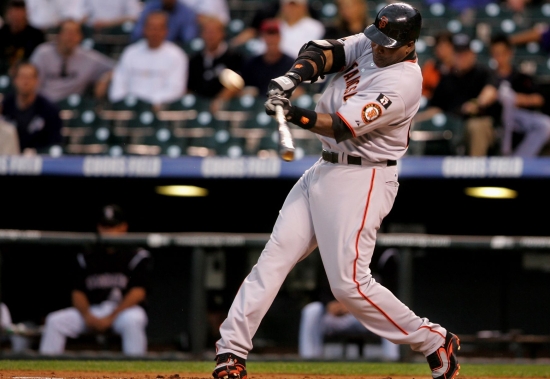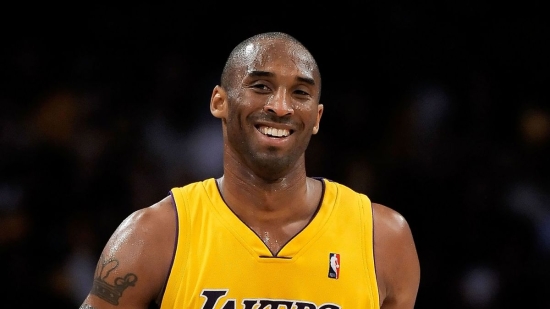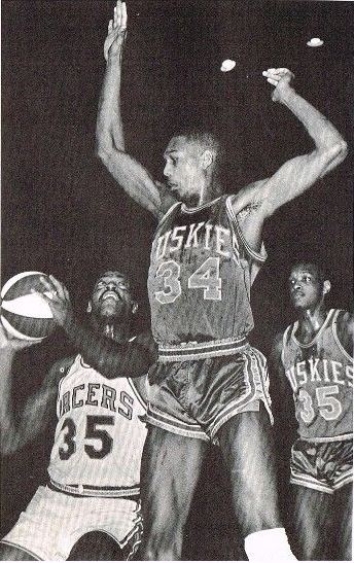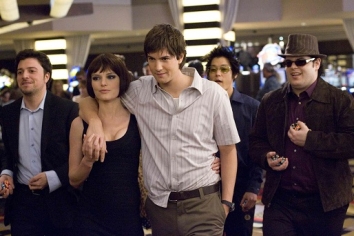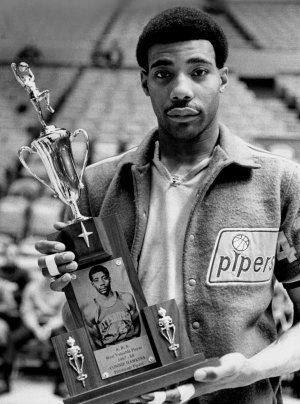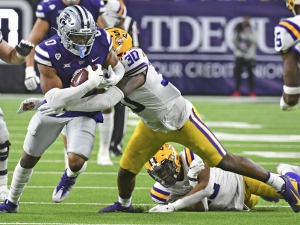If I Had a Vote in the 2022 Baseball Hall of Fame Election
On a ballot packed with qualified candidates for the National Baseball Hall of Fame, is it possible that none of them will be elected this year?
If that happens, as it did last year, it would be the third time in the last decade that the qualified voters of the Baseball Writers' Association of America (BBWAA) have thrown a shutout at the Hall of Fame. This is an odd paradox considering that after the Big Zilch of 2013, the BBWAA in subsequent years went on to elect 22 players across the next seven ballots, with the various guises of the veterans committee voting in another five players (and six non-players) during that seven-year span. (In 2013, the veterans committee did elect three candidates to the Hall.)
Last year, Curt Schilling, who had garnered 70 percent of the vote on the previous ballot, seemed to be a lock for election. Instead, he stalled with a negligible increase in support, then threw a social-media Trumper tantrum declaring that he wanted to be removed from this year's ballot. The Hall of Fame quickly responded that it would not do so.
- baseball hall of fame
- bobby abreu
- mark buehrle
- carl crawford
- prince fielder
- todd helton
- ryan howard
- tim hudson
- torii hunter
- Andruw Jones
- Jeff Kent
- tim lincecum
- justin morneau
- joe nathan
- david ortiz
- jonathan papelbon
- jake peavy
- andy pettitte
- aj pierzynski
- alex rodriguez
- Scott Rolen
- jimmy rollins
- mark teixeira
- Omar Vizquel
- Billy Wagner
- barry bonds
- roger clemens
- Curt Schilling
- Gary Sheffield
- sammy sosa
- Manny Ramirez
The Greatest Athletes from Philadelphia
Philadelphia is not only the birthplace of the United States but also the birthplace and childhood neighborhood for many great sportspeople. With four major sports teams in the city, the city of brotherly love has been called an underachiever with just two major championships in the last twenty years. Still the city has had much to offer with many great athletes and hall of famers growing up in Philadelphia. Let’s have a look at some of the legends.
Wilt Chamberlain
This Philadelphian is one the greatest athletes from Philadelphia and one of the best to play the game of Basketball. The 7-feet 1-inch-tall player was known for his long-standing rivalry with Bill Russell and still holds numerous NBA records.
To this date he is still the only player to have scored 100 points in a single game. He is the only player in history to average more than 30 points and 20 rebounds per game and is second only to Michael Jordan in point per game average. He was a major part of the 1967 championship winning roster that took home the second NBA title to the city of Philadelphia and has earned him legendary status in the city.
Joe Frazier
Frazier was not born in Philadelphia but packed up his bags in 1959 at the age of 15 to travel to Philadelphia. The boxer soon became a big name in the amateur ranks and won three Golden Gloves championships in a row from 1962 through 1964 before taking home an Olympic gold medal at the 1964 Tokyo Games.
Smokin’ Joe would go on to become a heavyweight world champion in 1970 and go up against Muhammad Ali in 1971 in what has been billed as the fight of the Century. The fight saw Frazier hand Muhammad Ali the first defeat of his career and create a legend about the hard hitter from South Carolina.Kobe Bryant
A life that ended up with a tragedy was started in the neighborhoods of Philadelphia, where his father Joe Bryant played for Philadelphia 76ers. Growing up in Italy and Philadelphia Bryant grew his own talent and decided to skip college and enter the 1996 draft as a high school player.
The Black Mamba was picked 13th overall by the Los Angeles Lakers and would go on to be one of the most legendary players in franchise history. With him on the team the franchise won 5 NBA championships in 21 seasons with him being elected to 18 all-star games, second only to Kareem Abdul-Jabbar.
This year his former team the Lakers are one of the favorites for the NBA title with Lebron James leading the franchise. With many games still left this season you can find plenty of games to bet on. Read all about betting here.
Mike Powell
This track and field athlete still holds the world record for the longest long jump ever. His record of 8.95 meter has stood since 1991 and it does not look like it is going to be beaten any time soon. Unfortunately for Powell there was another amazing American long jumper at the time called Carl Lewis who would go on to win two Olympic gold medals right in front of him. At the World Championships in 1991 in Tokyo Mike Powell finally got the better of him to take home his first major championship medal.
Awards - HOF? Part Sixty-Four The ABA Rookie of the Year
We here at Notinhalloffame.com thought it would be fun to take a look at the major awards in North American team sports and see how it translates into Hall of Fame potential.
Needless to say, different awards in different sports yield hall of fame potential. In basketball, the team sport with the least number of players on a roster, the dividend for greatness much higher. In baseball, it is not as much as a great individual season does not have the same impact.
Last time, we looked at the ABA MVP. This time, we look at the ABA Rookie of the Year.
The trophy was awarded every year of the league’s existence, beginning in 1968 and concluding in 1976.
How many ABA Rookies of the Year made the Naismith Basketball Hall of Fame?
Let’s find out!
The following are the past players who have won the ABA Rookie of the Year who are eligible for the Naismith Basketball Hall of Fame and have been enshrined.
1968: Mel Daniels, Minnesota Muskies, 22.2 MP, 15.6 PPG, 1.4 RPG, 2.2 APG, N/A SPG, N/A BPG, 9.2 WS.
Mel Daniels was drafted by the Cincinnati Royals (9th Overall), but he opted for the higher salary of the Minnesota Muskies. As a rookie, Daniels led Minnesota to the Finals where they lost to Pittsburgh, and he began a streak of seven All-Star Games. The Muskies were struggling financially, and moved to Florida, but not with Daniels who they traded to Indiana. As a Pacer, Daniels won two MVPs and three ABA Titles
Inducted into the Hall of Fame in 2012.
1970: Spencer Haywood, Denver Nuggets, 45.3 MP, 30.0 PPG, 19.5 RPG, 2.3 APG, N/A SPG, N/A BPG, 9.2 WS.
Opting to turn pro after his sophomore year in college, Spencer Haywood’s only option was the ABA, as the NBA then had a rule that a player could not turn professional until his class graduated. Haywood then played one year with Denver of the ABA, winning both the MVP and Rookie of the Year, becoming the only player to do so. He also led the league in Minutes and Rebounds and Points per Game. Following this season, Haywood joined the NBA with Seattle, and successfully challenged to join the league in a case that went to the Supreme Court. Haywood later would be a four-time NBA All-Star, and won an NBA Title with the Lakers.
Inducted into the Hall of Fame in 2015.
Co-Winner 1971: Charlie Scott, Virginia Squires, 37.9 MP, 27.1 PPG, 5.2 RPG, 5.6 APG, N/A SPG, N/A BPG, 7.2 WS.
Charlie Scott signed with the Virginia Squires before the NBA Draft, hence why he fell to the Seventh Round, where he was chosen by the Celtics. Scott was an ABA All-Star this year, and an All-ABA Selection, and was so the year after although he did not complete his second season. He bolted for the NBA for Phoenix, who traded for his rights. Scott was a three-time NBA All-Star, and would later be an NBA Champion when he was with Boston in 1976.
Inducted into the Hall of Fame in 2018.
Co-Winner 1971: Dan Issel, Kentucky Colonels, 39.4 MP, 29.9 PPG, 13.2 RPG, 2.0 APG, N/A SPG, N/A BPG, 10.7 WS.
Issel led the ABA in Points per Game, and it was the second highest of his career. An All-Star as a rookie, Issel was an All-Star through the end of the ABA and was so again when the leagues merged, giving him seven in total. He was a five-time All-ABA Selection.
Inducted into the Hall of Fame in 1993.
1972: Artis Gilmore, Kentucky Colonels, 43.6 MP, 23.8 PPG, 17.8 RPG, 2.7 APG, N/A SPG, 5.0 BPG, 19.8 WS.
Gilmore also won the ABA MVP, and remained with Kentucky for the remainder of the ABA’s existence. Following the dissolution of the Colonels, Gilmore played for the Bulls, Spurs and Celtics, with the Center appearing in 11 total All-Star Games.
Inducted into the Hall of Fame in 2011.
1976: David Thompson, Denver Nuggets, 37.4 MP, 26.0 PPG, 6.3 RPG, 3.7 APG, 1.6 SPG, 1.2 BPG, 12.4 WS.
Taken number one by the Atlanta Hawks, David Thompson instead opted to play for Denver of the ABA, in what would be the last year of the ABA. An All-Star this year, Thompson remained with the Nuggets when the leagues merged. He would later go to four more All-Star Games in the NBA, three with Denver and one with Seattle.
Inducted into the Hall of Fame in 1996.
The following are the players who have won the ABA Rookie of the Year who are eligible for the Naismith Basketball Hall of Fame and have not been selected:
1969: Warren Jabali, Oakland Oaks, 35.8 MP, 21.5 PPG, 15.6 RPG, 1.4 APG, N/A SPG, N/A BPG, 5.8 WS.
Jabali was a Fourth Round Pick from Wichita State, but instead he opted to go to Oakland od the ABA. The Shooting Guard helped Oakland with the Title that year, and he would later be a four-time ABA All-Star, competing his entire pro career in the upstart league. He also played for Washington, Indiana, Florida, Denver and San Diego.
Eligible Since 1981.
1973: Brian Taylor, New York Americans, 32.3 MP, 15.3 PPG, 3.2 RPG, 2.8 APG, N/A SPG, N/A BPG, 3.6 WS.
With all due respect the Taylor, this was the weakest Rookie of the Year in ABA history, but he would go on to be a two-time ABA All-Star and two-time ABA Champion with New York. He would later play in the NBA in Kansas City, Denver and San Diego.
Eligible Since 1988.
1974: Swen Nater, Virginia Squires and San Antonio Spurs, 30.1 MP, 14.1 PPG, 12.6 RPG, 1.6 APG, 0.4 SPG, 0.8 BPG, 8.7 WS.
A two-time NCAA Champion at UCLA, Nater chose the ABA over the Milwaukee Bucks, who took him 18th Overall. Nater was first drafted in the ABA in 1972 by the Miami Floridians, but when they folded, Virginia took him in the Dispersal Draft. As good as he was, the Squires traded him for a draft pick and $300,000 to San Antonio 17 Games into his rookie year. He led the ABA in Field Goal Percentage, and was the ABA Rebounding leader as a sophomore. Nater, would later win an NBA Rebounding Title as a member of the San Diego Clippers in 1978/79.
Eligible Since 1990.
1975: Marvin Barnes, Spirits of St. Louis, 39.9 MP, 24.0 PPG, 15.6 RPG, 3.2 APG, 1.2 SPG, 1.6 BPG, 8.6 WS.
Selected second overall by the 76ers, Providence’s Marvin Barnes instead opted to sign with St. Louis, where he was an All-Star in both of his seasons in the league. When the ABA merged with the NBA, St. Louis was disbanded, and he joined the Detroit Pistons, but was not as successful in the NBA. He would also play a year each in Buffalo, Boston and San Diego.
Eligible Since 1986.
Let’s update our tally, shall we?
|
Award in Question |
Percentage of recipients who have entered the HOF |
Percentage of recipients by year who have entered the HOF. |
|
NBA MVP |
100% |
100% |
|
NHL Art Ross |
100% |
100% |
|
ABA MVP |
100% |
100% |
|
NHL Hart Trophy |
93.6% |
96.3% |
|
NBA Finals MVP |
91.3% |
94.9% |
|
NHL Norris |
90.5% |
96.4% |
|
NHL Ted Lindsay Award |
90.0% |
|
|
NBA All-Star Game MVP |
89.5% |
91.7% |
|
NHL Conn Smythe |
74.2% |
85.4% |
|
NFL Bert Bell Award |
73.7% |
71.4% |
|
NFL AP Offensive Player of the Year |
73.1% |
79.4% |
|
NFL AP MVP |
68.3% |
74.0% |
|
NFL Walter Payton Man of the Year |
66.7% |
66.7% |
|
NHL Lady Byng |
63.8% |
76.0% |
|
NFL Defensive Player of the Year |
60.8% |
71.1% |
|
NFL Super Bowl MVP |
60.6% |
64.9% |
|
NHL Mark Messier Leadership Award |
60.0% |
60.0% |
|
ABA Rookie of the Year |
60.0% |
60.0% |
|
NBA Defensive Player of the Year |
58.3% |
56.5% |
|
NHL Vezina |
57.1% |
66.3% |
|
NBA Rookie of the Year |
56.5% |
56.5% |
|
MLB MVP |
55.0% |
60.2% |
|
NFL Pro Bowl MVP |
52.3% |
54.8% |
|
MLB Lou Gehrig Award |
51.9% |
51.9% |
|
MLB Roberto Clemente Award |
47.4% |
47.4% |
|
NHL Calder Trophy |
46.5% |
46.5% |
|
NBA J. Walter Kennedy Citizenship Award |
46.0% |
46.0% |
|
MLB/NL/AL Cy Young Award |
44.4% |
55.4% |
|
MLB All-Star Game MVP |
41.3% |
44.0% |
|
MLB Babe Ruth Award |
37.0% |
39.3% |
|
NHL King Clancy Award |
36.8% |
36.8% |
|
NHL Frank J. Selke Trophy |
33.3% |
36.7% |
|
MLB World Series MVP |
33.3% |
36.8% |
|
MLB Hutch Award |
33.1% |
33.1% |
|
NFL Offensive Rookie of the Year |
28.6% |
28.6% |
|
NHL Bill Masterton Memorial Trophy |
27.9% |
27.9% |
|
MLB Edgar Martinez Award |
26.7% |
17.2% |
|
MLB Delivery Man of the Year |
25.0% |
50.0% |
|
MLB (NL/AL) Silver Slugger (Designated Hitter) |
25.0% |
30.8% |
|
MLB Comeback Player of the Year |
25.0% |
25.0% |
|
MLB (NL/AL) Silver Slugger (Shortstop) |
23.5% |
52.6% |
|
MLB (NL/AL) Gold Glove |
21.7% |
36.8% |
|
NHL William M. Jennings Trophy |
20.7% |
40.4% |
|
NFL Defensive Rookie of the Year |
20.6% |
20.6% |
|
MLB (NL/AL) Silver Slugger (Catcher) |
20.0% |
22.5% |
|
MLB (NL/AL) Gold Glove (Second Base) |
18.8% |
39.8% |
|
MLB Rolaids Reliever of the Year |
18.6% |
33.3% |
|
MLB (NL/AL) Gold Glove (Shortstop) |
18.2% |
35.1% |
|
MLB (NL/AL) Silver Slugger (Pitcher) |
18.2% |
20.1% |
|
MLB (NL/AL) Silver Slugger (Second Base) |
16.7% |
32.7% |
|
MLB (NL/AL) Gold Glove (Outfield) |
16.7% |
30.1% |
|
NBA Sixth Man of the Year |
16.7% |
18.5% |
|
MLB NLCS/ALCS MVP |
16.1% |
15.3% |
|
MLB (NL/AL) Silver Slugger (Outfield) |
15.7% |
25.2% |
|
MLB (NL/AL) Gold Glove (Third Base) |
14.3% |
14.3% |
|
MLB (NL/AL) Silver Slugger (Third Base) |
13.6% |
14.3% |
|
MLB (NL/AL) Silver Slugger (First Base) |
13.6% |
13.3% |
|
MLB (NL/AL) Rookie of the Year |
13.3% |
13.3% |
|
MLB (NL/AL) Gold Glove (Catcher) |
10.3% |
15.2% |
|
MLB Hank Aaron Award |
9.1% |
14.3% |
|
NBA Most Improved Player of the Year |
5.3% |
3.2% |
|
MLB (NL/AL) Gold Glove (First Base) |
3.8% |
3.2% |
|
NFL AP Comeback Player of the Year |
0.0% |
0.0% |
So, who is up next?
The following are the players who have won the ABA Rookie of the Year who have retired but have not met the mandatory years out of the game to qualify for the Naismith Basketball Hall of Fame:
None.
The following are the past players who have won the ABA Rookie of the Year are eligible for the Naismith Basketball Hall of Fame and are still active.
None.
Nothing will change in this going forward as none of the ABA Rookies of the Year who have not been inducted feel like they have Hall of Fame potential. As this is now a defunct category, this feels like more than a footnote going forward.
So, what is up next?
We stay with the ABA, and look at their past ABA All-Star Game MVPs.
As always, we thank you for your support, and look for that soon.
Remembering 21
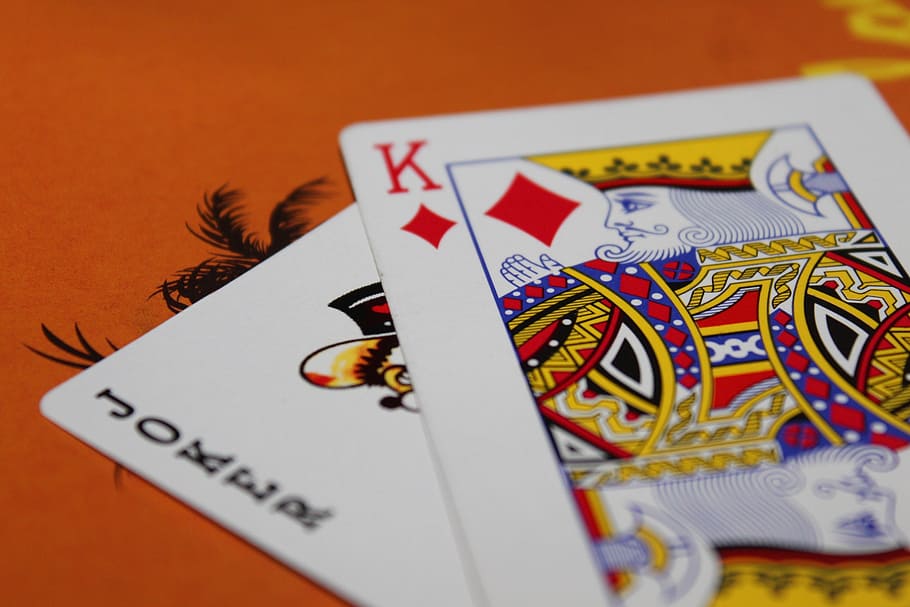
On paper, the antics of a group of MIT college nerds may not make for compelling viewing, but if you’re a bit of a casino buff then is 21 a classic movie that you should check out?
Bill’s Blackjack Brigade
For around two decades at the tail-end of the 20th century, a team of US students made waves in the casino gaming world for proving that, when it comes to blackjack, it is possible to beat the house.
In 1977, Bill Kaplan, a Harvard grad, discovered the art of card counting in blackjack and proceeded to win $35,000 in just nine months. Setting up the MIT Blackjack Team in the aftermath of his success, Kaplan would lead the group of current and ex-students at the Massachusetts Institute of Technology as they took on and beat the house at prestigious casinos across the world.
Achieving global notoriety, Kaplan and the MIT Blackjack team captured the attention of writers and creatives, including a certain Ben Mezrich. The aspiring author would go on to compile the most salient and salacious escapades of those MIT students in Bringing Down the House: The Inside Story of Six MIT Students Who Took Vegas for Millions, which formed the basis of Robert Luketic’s 2008 heist movie, 21.
Based on True Events
All of that backstory is, of course, inconsequential to the average movie-goer, so Luketic, along with producer and star Kevin Spacey, naturally needed to add some Hollywood sparkle into the mix.
In 21, the antics of the blackjack team are conveyed through the eyes of the exceptionally gifted MIT student, Ben Campbell (played by Jim Sturgess). Campbell’s ultimate goal is to attend Harvard Medical School, but there’s the matter of the $300k tuition fees that stand in his way.
Campbell’s classmates, noticing the brainiac’s propensity for all things mathematics, introduce him to a certain Mickey Rosa (Kevin Spacey), the man behind an underground group of blackjack players who also happen to be members of the student faculty.
The group is determined to win big in Vegas after swotting up on card counting and they invite Campbell along with them. Although he’s hesitant at first, he’s soon persuaded to join the team and so begins his initiation into the fascinating world of this centuries-old casino staple.
After racking up several big wins in a short space of time, it’s not long before Campbell, Rosa and the team come under the microscope of loss prevention specialist, Cole Williams (Laurence Fishburn), an anti-card counting proponent who suspects there might be something more at play than just these maths and science geniuses’ gift for the game.
Is it any good?
A purveyor of rom-coms more than heist movies, 21 is Luketic's attempt to go down a grittier route. In some respects he succeeds, but in others he most certainly fails.
Enjoyable hijinks are afoot in the film’s zippy Vegas scenes as Campbell and his crew adopt new identities with each and every table they hit. Moody lighting and almost slapstick costumery doesn’t exactly make these parts of the film true to life, but they nevertheless portray the ultimate Vegas casino fantasy.
Sturgess and his romantic lead, Kate Bosworth, shine in their respective performances of the Harvard wannabe and Jill, the prettiest girl in the school who also happens to be a maths genius. But it’s this romance-driven subplot that is the film’s undoing. In the words of Rotten Tomatoes’ critical consensus, 21 had all the makings of a fascinating study but Luketic made a grave error by “supplant[ing] the true story on which it is based with mundane melodrama”.
Fishburn and Spacey lend a touch of gravitas to proceedings in their roles as Williams and Rosa, although the former was mostly given one-note material to work with and Spacey has a tendency to go full-ham even when it's not needed.
As for the main star of the film, Blackjack, there’s enough gaming content here to make this a worthy addition to a games night, but casino nerds shouldn’t look too closely at the casino scenes. For the rest of us, 21 is an entertaining, fluffy movie, but it could've been so much more if Luketic had gone all out and given us an insider look at professional casino gaming.
Online Sports Betting Sites: Are Their Prices Inelastic?
Many online sportsbooks in the U.S. today are marketing to recreational bettors. Offers like welcome bonuses and loyalty rewards may entice more people to consider betting online.
This strategy appears to be aimed at increasing the sportsbooks’ customer base. These offers may also affect the customers’ decision-making and betting behavior more than the pricing can.
With its legalization in the U.S. in 2018, sports betting has become more accessible to more people. Furthermore, the recent COVID-19 pandemic has driven more people to stay at home and spend more time and money on online betting.
In 2020, sports betting generated a $1 billion revenue in the U.S. At the beginning of 2021, 23.2 million Americans expressed interest in betting $4.3 billion on the Super Bowl alone, and 7.6 million people said they would bet online.
With this current landscape, online gambling may be expected to grow into a $100 billion industry by 2026.
As more sports betting sites appear, the need to offer competitive prices to bettors becomes paramount. In this case, will adjusting prices be enough to increase the demand for online betting?
This article discusses price elasticity in sports betting and the factors that affect sports betting demand in the U.S.
Price Elasticity in Online Sports Betting
Theoretically, if online sports betting prices were elastic, demand should change significantly with only a slight price change.
For example, a slight reduction in a bookmaker’s vig can narrow their profit margin. However, that reduction may significantly increase the number of bets. In this case, the bookmaker’s prices may be relatively elastic.
However, are price changes sufficient to significantly change the demand for sports betting in real-world scenarios? Put another way, do price changes even matter when sportsbooks try to market their products?
Below are some factors that can influence bettors’ preferences when it comes to online sports betting.
Factors Affecting Sports Betting Demand in the U.S.
Price
Historically, Las Vegas and U.S.-facing offshore sportsbooks significantly influenced how line prices were set.
Nowadays, because of U.S. market regulations, operators and sportsbook suppliers in large states are now playing a role in providing competitive prices.
In addition, the regulations ensure that the operators are pricing their lines competitively.
A sportsbook with a high price elasticity should experience a high surge in demand with just a slight reduction to its vig. Alternatively, bettors may shy away from the sportsbook if it were to increase its house take.
However, that scenario is only theoretical, and pricing is not the only factor influencing demand for online sports betting.
Brand Association
Bettors also look into an online sportsbook’s brand reputation and association. Most legally operating sportsbooks have partnerships with physical and online casinos, big sports betting brands, or other gambling entities that give the sportsbook more credibility.
This credibility is likely to increase the sportsbook’s value and make bettors trust the sportsbook more. This trust may influence the bettor’s behavior in favor of the sportsbook, dictated not only by the price but also by the brand.
For example, partnerships with major sports leagues mean the sportsbook is reliable enough to be recognized by those leagues.
Other betting sites may receive backing from big brands. If bettors prefer those brands, the sponsorship may increase the chances of the bettor favoring the sportsbook.
On-Par Product and Experience Delivery
Competitive pricing and reputable brand association may not be enough to influence demand. Bettors may also ask for products and services of equal or higher value to the sportsbooks’ prices.
One way for this strategy to work is to ensure that bettors experience the convenience worth their money. This way, pricing may matter less as long as the bettor experiences quality service.
For example, the bookmaker’s online platform must be user-friendly and navigable. Sportsbooks may also provide welcome bonuses and rewards for bettors to maximize their deposits.
If the sportsbook has a mobile app, that feature may be considered a plus for accessibility. Mobile apps allow bettors to place bets, even when traveling or watching a live game in a stadium.
Additional payment options other than credit cards can also favor both the bookmaker and the customer.
More options to fund betting accounts, like online payment gateways, provide more convenience to bettors, increasing customer demand for the bookmaker’s services.
Other features that can add to a sportsbook’s ability to deliver quality services include moderating a bettor’s gambling habits and protecting their personal information.
Bettors must know that their private data is safe or that the sportsbook cares enough to help them curb developing gambling problems. These efforts may help them associate a positive experience with the sportsbook.
Bookmakers can further improve customer experience if they have a connection with advocacy groups promoting responsible gambling. This connection shows that the sportsbook encourages bettors to have a healthy gambling lifestyle.
Legal vs. Offshore Operators
The issue between offshore and U.S.-based legal sportsbook operators is that the U.S. sportsbooks are regulated while the offshore ones are not. This situation puts the U.S. sportsbooks in a challenging position against their offshore counterparts.
U.S. operators may think of offering products and services at par with the offshore operators to remain competitive. However, bettors may see no incentive to prefer U.S. sportsbooks if this were the case.
Instead, U.S. operators need to offer better products and services than offshore sportsbooks’ to stay on top of the game.
Conclusion
Demand for online sports betting is unlikely to change by simply adjusting the prices offered by the bookmakers. For some people, this situation may be indicative of price inelasticity.
That said, other factors have to be considered, including brand association, product and experience delivery, and the choice between offshore and legal operators.
These factors may affect the bettors’ outlook toward the sportsbook and influence demand more than just price changes alone can do.
Individuals interested in online sports betting should check their local state laws if sports betting is legal in their area.
What to Watch Out for this NHL season
After a couple of disruptive years where Covid made traveling between US and Canada difficult, NHL is finally easing back into the new normal. And if all goes well, we will have our Stanley Cup champion in the spring of 2022. You therefore have plenty of great games to look forward to as we enter the next stage of the season and head towards the Stanley Cup Playoffs.
NHL features the best of American and Canadian hockey. 32 teams competing in around 56 games. With many victories and losses already, 2022 is bound to be a thrilling part of this year’s season, and there are four teams that are looking particularly strong.
Will Tampa Bay make history?
The last two NHL seasons, Florida Tampa Bay Lightning has won, yet no team has ever won Stanley Cup three times in a row, which means Tampa Bay could make hockey history this year - but they have a long way to go. Colorado Avalanche, Vegas Golden Knights and Florida Panthers are all looking dangerous, and many experts believe the winner is to be found among them. If you already have a strong sense of who that might be, then you can bet on them on https://betting.com/us/nhl. In the past year we have seen many US states legalizing the practice, and in Canada it is legal. Sports betting has therefore become hugely popular among hockey fans. It’s simply a fun way to take an active part in the NHL season.
Will the Beijing Olympics affect the season?
With the winter Olympics fast approaching, there has been a lot of talk about what NHL players might go and what that will mean for their teams. Some people have wondered what will happen to the NHL league, or if they will get to see their favorite stars on the ice, competing for international glory. Sadly, Covid has yet again brought disruptions into the sports world. For this reason, the NHL league has decided not to send any players to the Olympics. But the good news is that there is now a higher chance that regular NHL games of this season will go ahead as planned. No stars will have to leave their teams behind.
Anticipated upcoming games
There are many thrills in store for hockey fans this year. Avalanche has some great games coming up – from fighting Coyotes to testing their abilities against the Kings. And if you want to see Tampa Bay Lightning in action outdoors, you have a chance to do so on 26 February 2022 when they play against Nashville Predators at Nissan Stadium in Nashville. Overall, the winter will be packed with matches on an almost daily basis, so you do not need to worry about getting bored. Now is the time to get geeky about hockey history. Spend some time remembering all the best moments and use that knowledge to predict the legends of the future. It’s a fun way to pass time between games.
Tips To Consider When Selecting the Right Online Gambling Platform
Online betting is a trending way of earning cash. Technology has played a big part in making it easier for gamblers to place bets. However, numerous online betting platforms have posed a challenge to newbies who want to join the gambling business. In investing your money through betting, consider not losing your money through the platform you join. If you make hurried decisions, you may not make it to get what is best for you. Take your time and research the best platform to invest your money. Having read the factors below, you will know what to contemplate for an effective platform.
Consider the suitability for your betting objectives
A legit site for you should be suitable to meet your needs and objects. For instance, consider taking your time and listing what you need; this will help you compare what the gambling site can do and how it may meet your objectives. Check if the site has the games you need to bet on first, ensure all the sports you want to bet are provided on the platform. Check on the payment options available; ensure you select a forum that will meet your needs. Finally, consider checking the policies available and procedures for bonuses that are provided.
Check on the legal issues
Many illegal betting sites (iddaa siteleri) exist online. To avoid being fooled, find out if you are working with a licensed platform. It is essential to bet on a site that is part of the regulated jurisdiction through the internet. Please make sure you research on them to know that particular platform is trusted, and you should consider betting on a positively reviewed website. Be aware of paid reviews and legit reviews, and you should try to differentiate. For one to establish if the platform is legit, it is paramount to check on their reviews.
Check on customer support
It is crucial for any betting platform; customer support will determine the site's success. Before you decide, ensure you try emailing them or call them to observe the time they will take to respond to your queries. A reputable betting agency will take the shortest time to answer and deliver answers to your previous questions.
Look at the banking options
Consider selecting a site that will allow you to deposit funds in various ways. On the depositing and withdrawing side, different agencies charge different amounts; thus, consider choosing a site that will charge a reasonable amount. It would be advisable to choose a company that will charge you less on your return for you to make a good profit. Check also on how urgent the betting sites (iddaa siteleri) can help you when you have withdrawn; some sites need time to wait for your payments; this will help you if you need the money urgently. If you deposited the money and need to cash out, check first if the platform you select will help you. Always choose a betting site that you will not regret.
Ranking the Worst WWE Celebrity Appearances
WrestleMania is one of the WWE’s most important events. Each spring since 1985,the WWE has brought together some of its most successful wrestlers who hash out year-long feuds between the ropes. There’s guts, glory, and more than a handful of celebrity guest wrestlers.
These have run the gambit over the years, from a Chris Jericho cross-promotion of Tim Burton’s Planet of the Apes in 2001 to the Queen of Soul, Aretha Franklin, belting out ‘America The Beautiful’ to open up the third annual event in 1988.
Part pro sport and part acting gig, professional wrestling’s ongoing success might surprise a traditional sports fan. It doesn’t have a set of clear rules, won’t be played at the Olympics any time soon, and doesn’t often feature on afree sports bet offer from oddsmakers given the difficulties of betting on the WWE.
However, what the WWE lacks in traditional representation it makes up for in a wild ride, truly athletic stunts, and a cast of unforgettable characters. Even better, the depth of bets is starting to expand as the sport becomes more mainstream—and one of those prop bets on offer is whether a celebrity will win a match during WrestleMania.
As the biggest pro wrestling event in the world, WrestleMania has seen celebrities from all industries step foot in the ring. Some, like the cast of Jackass, have been huge successes. Others, like the flops listed below, have gained notoriety for being some of the worst celeb appearances (including RAW segments).
Number One: Kevin Federline
Back in 2006, the former partner of pop star Britney Spears was at the height of his fame. As mentioned above, most celebrity appearances on WWE coincide with promoting another project; for K-Fed, this was a studio album.
Fans were torn about the worst part of the performance—was it when John Cena attempted to out-rap Federline? When Federline showed up at another RAW event and the WWE powers-that-be let a D-list celebrity pin Cena? Many are still wondering.
Number Two: Jerry Springer
On the surface, Springer should be a hit for the WWE, as the TV personality knows drama and timing. Unfortunately, both of his appearances were incredibly awkward. What should have been a killer segment with Springer mediating The Bella Twins turned into a masterclass in horrendous acting.
Was it Springer’s fault, or another mishandling from WWE producers who banked too much on performers delivering complex dialogue?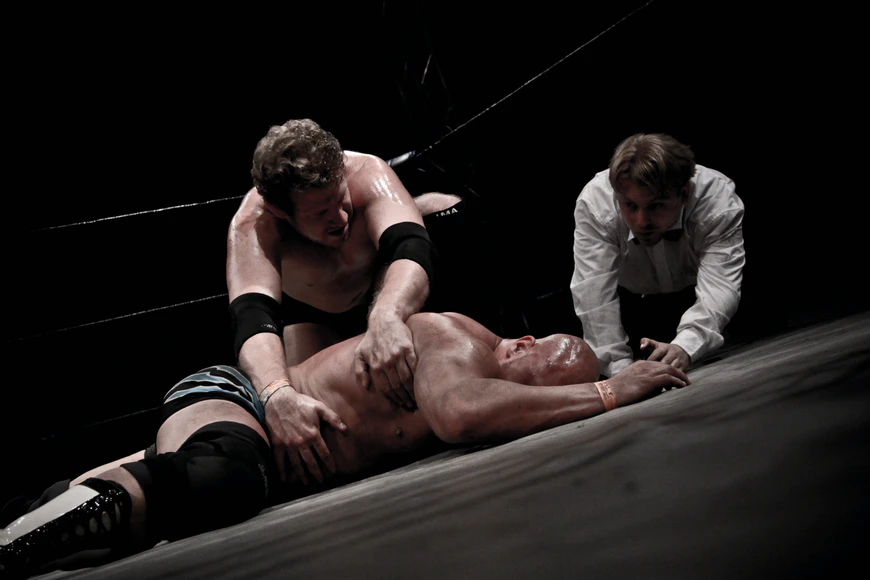
Number Three: Gronk
This call-out isn’t based on Gronk’s lack of acting skills or mismanagement from the WWE. Instead, reports from other wrestlers hint that the NFL star was actually the problem. As he prepared to host WrestleMania for his second appearance in the WWE, wrestlers reported a subpar attitude behind the scenes that led toa subpar reception from fans.
Number Four: Donald Trump
Once again, the WWE looked to have a winner when Donald Trump, of The Apprentice fame at the time, signed on for a WrestleMania appearance. Typically, fans enjoy seeing non-athletic celebs jump into the ring and get their hands dirty—a line like ‘you’re fired’ only adds to the hype and serves to drive a longstanding feud between Trump and Vince McMahon.
Unfortunately, the WWE forever ruined this interesting dynamic when they sent Bobby Lashley and Umaga into the ring on behalf of Trump and McMahon, respectively. Though WrestleMania 23 saw Stone Cold Steve Austin down the future president with a Stunner, audiences were noticeably cold to the new routine.
Number Five / Best of the Worst: The Muppets
Once again part of a 2011 promotion of The Muppets, this RAW crossover was hilarious, confusing, and memorable. Highlights include Miss Piggy’s altercation with Vickie Guerrero and Jack Swagger and Swagger’s attack on Gonzo.
Awards - HOF? Part Sixty-Three: The ABA MVP
We here at Notinhalloffame.com thought it would be fun to take a look at the major awards in North American team sports and see how it translates into Hall of Fame potential.
Needless to say, different awards in different sports yield hall of fame potential. In basketball, the team sport with the least number of players on a roster, the dividend for greatness much higher. In baseball, it is not as much as a great individual season does not have the same impact.
Last time, we looked at the MLB All-Star Game MVP. This time, we return to Basketball, with the ABA, and the now defunct league’s MVP.
The trophy was awarded every year of the league’s existence, beginning in 1968 and concluding in 1976.
How many ABA MVPs made the Naismith Basketball Hall of Fame?
Let’s find out!
The following are the past players who have won the ABA MVP who are eligible for the Naismith Basketball Hall of Fame and have been enshrined.
1968: Connie Hawkins, Pittsburgh Pipers, 44.9 MP, 26.8 PPG, 13.5 RPG, 4.6 APG, N/A SPG, N/A BPG, 17.9 WS.
Hawkins was involved in the Iowa point shaving scandal that rocked college basketball, though it is widely believed he had nothing to do with it. Nevertheless, he was blackballed from college hoops and went undrafted, essentially being banned from earning a living in pro basketball. Hawkins became a streetball superstar, but had a pro lifeline when the ABA formed, and he signed with Pittsburgh, the team he led to the first ABA Title, while he won the first ever ABA Scoring Title. An ABA All-Star this year, he would later join the Phoenix Suns in 1969, and would go to four consecutive All-Star Games.
Inducted into the Hall of Fame in 1992.
1969: Mel Daniels, Indiana Pacers, 38.6 MP, 24.0 PPG, 16.5 RPG, 1.5 APG, N/A SPG, N/A BPG, 8.6 WS.
A member of the Minnesota Muskies as an ABA rookie, Mel Daniels won the league’s first Rebounding Title, and won it again this year. Daniels led the Pacers to the ABA Title the following season.
Inducted into the Hall of Fame in 2012.
1968: Mel Daniels, Minnesota Muskies, 22.2 MP, 15.6 PPG, 1.4 RPG, 2.2 APG, N/A SPG, N/A BPG, 9.2 WS.
Mel Daniels was drafted by the Cincinnati Royals (9th Overall), but he opted for the higher salary of the Minnesota Muskies. As a rookie, Daniels led Minnesota to the Finals where they lost to Pittsburgh, and he began a streak of seven All-Star Games. The Muskies were struggling financially, and moved to Florida, but not with Daniels who they traded to Indiana. As a Pacer, Daniels won two MVPs and three ABA Titles
Inducted into the Hall of Fame in 2012.
1971: Mel Daniels, Indiana Pacers, 38.7 MP, 21.0 PPG, 18.0 RPG, 2.2 APG, N/A SPG, N/A BPG, 11.4 WS. (2)
Daniels won his third Rebounding Title this year, and though he would not win the ABA Championship this year, he would take them to wins in the next two. He would be named to the All-ABA Team, went to seven ABA All-Star Games, and was a five-time All-ABA Selection.
Inducted into the Hall of Fame in 2012.
1972: Artis Gilmore, Kentucky Colonels, 43.6 MP, 23.8 PPG, 17.8 RPG, 2.7 APG, N/A SPG, 5.0 BPG, 19.8 WS.
Gilmore also won the ABA Rookie of the Year Award, and remained with Kentucky for the remainder of the ABA’s existence. Following the dissolution of the Colonels, Gilmore played for the Bulls, Spurs and Celtics, with the Center appearing in 11 total All-Star Games.
Inducted into the Hall of Fame in 2011.
1973: Billy Cunningham, Carolina Cougars, 38.7 MP, 24.1 PPG, 12.0 RPG, 6.3 APG, 2,6 SPG, N/A BPG, 11.9 WS.
Billy Cunningham was the lead player for the Philadelphia 76ers, and surprisingly jumped to Carolina of the ABA in 1972, though he fought to get out of that contract when he felt that the Cougars reneged on a bonus. The court disagreed, and Cunningham was a Cougar for two years, winning the MVP in his first year there. Cunningham returned to the Sixers in 1974, playing two more years before retiring.
Inducted into the Hall of Fame in 1986.
1974: Julius Erving, New York Nets, 40.5 MP, 27.4 PPG, 10.7 RPG, 5.2 APG, 2.3 SPG, 2.4 BPG, 16.5 WS.
The ABA had a “Hardship Exemption” that allowed Julius Erving to enter the ABA in 1971, earlier than he would have been in the NBA. The Virginia Squires landed him in the draft, and “Dr. J” played for the Squires in his first two pro seasons. Legal entanglements saw Erving try to play for Atlanta of the NBA, but his NBA rights were held by Milwaukee, and he was still contractually bound to Virginia. The Squires were in financial disarray, and sold his contract to the New York Nets, with whom Erving agreed to play for, and he won his second straight scoring title, and led the Nets to their first ABA Title.
Inducted into the Hall of Fame in 1993.
1975 Co-Winner: Julius Erving, New York Nets, 40.5 MP, 27.9 PPG, 10.9 RPG, 5.5 APG, 2.2 SPG, 1.9 BPG, 17.6 WS. (2)
Erving remained dominant, and he would become the first back-to-back winner of the ABA MVP. Erving led the ABA in PER (26.2), and it was the third year in a row he did so. He also topped the league in Win Shares and VORP (10.3).
Inducted into the Hall of Fame in 1993.
1975 Co-Winner: George McGinnis, Indiana Pacers, 40.4 MP, 29.8 PPG, 14.3 RPG, 6.3 APG, 2.6 SPG, 0.7 BPG, 11.6 WS.
McGinnis began his pro career with the Pacers in 1971, and this was his fourth and final season in the ABA, and also his best. He won the Scoring Title, and had previously taken Indiana to two ABA Championships. McGinnis joined the 76ers after, but returned to the Pacers later when they were a NBA franchise.
Inducted into the Hall of Fame in 2017.
1976: Julius Erving, New York Nets, 38.6 MP, 29.3 PPG, 11.0 RPG, 5.0 APG, 2.5 SPG, 1.9 BPG, 17.7 WS. (3)
In the final year of the ABA, Erving closed it out in style, winning his third straight MVP, and leading the Nets to their second ABA Title. Erving again led the ABA in PER (28.7) and VORP (10.3), and as the ABA merged with the NBA, the Nets looked like they would instantly compete, or so it would seem. The New York Knicks balked at territorial rights, and the Nets were forced to offer financial compensation, so much so, that the Nets had to sell Erving’s contract to Philadelphia. Erving led the Sixers to the NBA Title in 1983, and was the MVP in 1981, becoming the only player to win the MVP in both leagues.
Inducted into the Hall of Fame in 1993.
The following are the players who have won the ABA MVP who are eligible for the Naismith Basketball Hall of Fame and have not been selected:
None.
Let’s update our tally, shall we?
|
Award in Question |
Percentage of recipients who have entered the HOF |
Percentage of recipients by year who have entered the HOF. |
|
NBA MVP |
100% |
100% |
|
NHL Art Ross |
100% |
100% |
|
ABA MVP |
100% |
100% |
|
NHL Hart Trophy |
93.6% |
96.3% |
|
NBA Finals MVP |
91.3% |
94.9% |
|
NHL Norris |
90.5% |
96.4% |
|
NHL Ted Lindsay Award |
90.0% |
|
|
NBA All-Star Game MVP |
89.5% |
91.7% |
|
NHL Conn Smythe |
74.2% |
85.4% |
|
NFL Bert Bell Award |
73.7% |
71.4% |
|
NFL AP Offensive Player of the Year |
73.1% |
79.4% |
|
NFL AP MVP |
68.3% |
74.0% |
|
NFL Walter Payton Man of the Year |
66.7% |
66.7% |
|
NHL Lady Byng |
63.8% |
76.0% |
|
NFL Defensive Player of the Year |
60.8% |
71.1% |
|
NFL Super Bowl MVP |
60.6% |
64.9% |
|
NHL Mark Messier Leadership Award |
60.0% |
60.0% |
|
NBA Defensive Player of the Year |
58.3% |
56.5% |
|
NHL Vezina |
57.1% |
66.3% |
|
NBA Rookie of the Year |
56.5% |
56.5% |
|
MLB MVP |
55.0% |
60.2% |
|
NFL Pro Bowl MVP |
52.3% |
54.8% |
|
MLB Lou Gehrig Award |
51.9% |
51.9% |
|
MLB Roberto Clemente Award |
47.4% |
47.4% |
|
NHL Calder Trophy |
46.5% |
46.5% |
|
NBA J. Walter Kennedy Citizenship Award |
46.0% |
46.0% |
|
MLB/NL/AL Cy Young Award |
44.4% |
55.4% |
|
MLB All-Star Game MVP |
41.3% |
44.0% |
|
MLB Babe Ruth Award |
37.0% |
39.3% |
|
NHL King Clancy Award |
36.8% |
36.8% |
|
NHL Frank J. Selke Trophy |
33.3% |
36.7% |
|
MLB World Series MVP |
33.3% |
36.8% |
|
MLB Hutch Award |
33.1% |
33.1% |
|
NFL Offensive Rookie of the Year |
28.6% |
28.6% |
|
NHL Bill Masterton Memorial Trophy |
27.9% |
27.9% |
|
MLB Edgar Martinez Award |
26.7% |
17.2% |
|
MLB Delivery Man of the Year |
25.0% |
50.0% |
|
MLB (NL/AL) Silver Slugger (Designated Hitter) |
25.0% |
30.8% |
|
MLB Comeback Player of the Year |
25.0% |
25.0% |
|
MLB (NL/AL) Silver Slugger (Shortstop) |
23.5% |
52.6% |
|
MLB (NL/AL) Gold Glove |
21.7% |
36.8% |
|
NHL William M. Jennings Trophy |
20.7% |
40.4% |
|
NFL Defensive Rookie of the Year |
20.6% |
20.6% |
|
MLB (NL/AL) Silver Slugger (Catcher) |
20.0% |
22.5% |
|
MLB (NL/AL) Gold Glove (Second Base) |
18.8% |
39.8% |
|
MLB Rolaids Reliever of the Year |
18.6% |
33.3% |
|
MLB (NL/AL) Gold Glove (Shortstop) |
18.2% |
35.1% |
|
MLB (NL/AL) Silver Slugger (Pitcher) |
18.2% |
20.1% |
|
MLB (NL/AL) Silver Slugger (Second Base) |
16.7% |
32.7% |
|
MLB (NL/AL) Gold Glove (Outfield) |
16.7% |
30.1% |
|
NBA Sixth Man of the Year |
16.7% |
18.5% |
|
MLB NLCS/ALCS MVP |
16.1% |
15.3% |
|
MLB (NL/AL) Silver Slugger (Outfield) |
15.7% |
25.2% |
|
MLB (NL/AL) Gold Glove (Third Base) |
14.3% |
14.3% |
|
MLB (NL/AL) Silver Slugger (Third Base) |
13.6% |
14.3% |
|
MLB (NL/AL) Silver Slugger (First Base) |
13.6% |
13.3% |
|
MLB (NL/AL) Rookie of the Year |
13.3% |
13.3% |
|
MLB (NL/AL) Gold Glove (Catcher) |
10.3% |
15.2% |
|
MLB Hank Aaron Award |
9.1% |
14.3% |
|
NBA Most Improved Player of the Year |
5.3% |
3.2% |
|
MLB (NL/AL) Gold Glove (First Base) |
3.8% |
3.2% |
|
NFL AP Comeback Player of the Year |
0.0% |
0.0% |
So, who is up next?
The following are the players who have won the ABA MVP who have retired but have not met the mandatory years out of the game to qualify for the Naismith Basketball Hall of Fame:
None.
The following are the past players who have won the ABA MVP are eligible for the Naismith Basketball Hall of Fame and are still active.
None.
Nothing will change in this going forward as the ABA MVPs are perfect for Hall of Fame induction. As this is now a defunct category, this feels like more than a footnote going forward.
So, what is up next?
We stay with the ABA, and look at their past Rookies of the Year.
As always, we thank you for your support, and look for that soon.
LSU vs. Kansas State: Wildcats Roll to Victory
The TaxAct Texas Bowl between LSU and Kansas State was expected to be a close game. On BetMGM, the line closed with Kansas State at -4.5. This number caused many bettors to turn to LSU because the Tigers would lose by a field goal, and the bet would still hit.
Even though the TaxAct Texas Bowl has concluded, the National Championship Game is still approaching. The best places to bet on college football and sports, in general, are on betting sites with free bets like BetMGM.
If you watched the Texas Bowl, you know the Wildcats steamrolled the Tigers. The final score ended up being 42-20 in favor of Kansas State. LSU looked lifeless without Coach O, which showed throughout the entire game.
The line varied throughout the bowl season, closing with Kansas State at -4.5. However, it was as high as -7.5, but it looked like it should have been -10. Coach O’s final game coaching the Tigers was against #15 Texas A&M.
The Tigers pulled off the upset in Death Valley in this matchup 27-24, but this team did not show up in Houston on Tuesday night.
In the second quarter, the Wildcats jumped out to a 21 to nothing lead. The night started with a Malik Knowles touchdown catch. Skylar Thompson put the ball right on the money for the 21-yard score.
These two connected again to make the score 21 nothing at the 7:01 mark in the second quarter. However, we cannot forget about Deuce Vaughn for the Wildcats, who scored the team’s second touchdown of the game.
Vaughn carried the ball 21 times for 146 yards and three touchdowns on the night. He also caught a touchdown in the fourth quarter.
Before the half, LSU showed some life and made it a two-score game. Jaray Jenkins caught a 23-yard touchdown pass from Jontre Kirklin to cap off a 13 play, 75-yard drive that lasted 6:41.
As strong as the Tigers looked to close the half, they had no answer for Kansas State for 27 minutes of the fourth quarter. The Wildcats went out and dominated, scoring 21 unanswered points.
All three of the scores were from Vaughn, the biggest troublemaker of the night for Kansas State. The Tigers had no answer for the running back, which made Wildcats bettors very happy.
Kansas State -4.5 cashed, even though the Tigers rallied at the end of the game. At this point, it was too late for Tigers +4.5 bettors to have any hope. Malik Nabers caught a strike from Kirklin again to make the score 42-14.
The final score of the game happened as time expired. Kirklin threw an 81-yard touchdown pass to Chris Hilton Jr. Hilton was the team’s leading receiver with that one catch.
It was a terrible night for the Tigers, and it showed Brian Kelly has a lot of work to do to fix the program. However, it’s unlikely he will fit the mold that Coach O left in Baton Rouge.
There were two areas that caused LSU to lose this game. The Tigers were 3 of 10 on third down, compared to the Wildcats, who were 8 of 12.
They could not get off the field or continue drives, which is never a winning formula. They were also -2 in the turnover margin, and the winning percentage goes way down when this is the case by winning third down and not turning the ball over.
Kansas State took care of business in Houston, covering -4.5 without much trouble.


